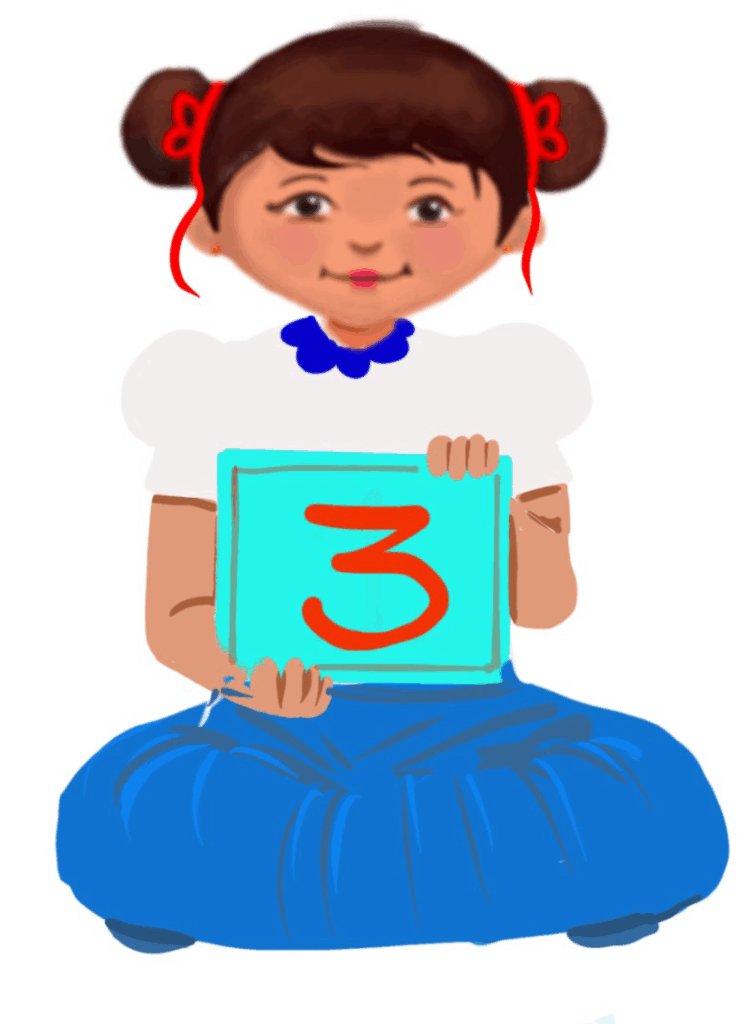
Join the Dots and Colour – Elephant
Class 3
 Objective
Objective
Students Students will be able to join the dots and colour the picture.
 Prerequisites
Prerequisites
1) Fine motor skills: Children should have developed the fine motor skills necessary to hold a colour pencil properly and make small movements with their hands to colour.
2) Hand-eye coordination: Children should be able to coordinate their hand movements with their vision to be able to colour within the lines without any gaps.
3) Attention span: Children should have the ability to focus for an extended period of time to complete a colouring task. However, this can vary from child to child.
4) Children should be able to identify basic shapes and colours.
NOTE: Adaptations, Variation in Rules and Pace are suggested below to develop the above prerequisites.
 Goal
Goal
All
All children can use pencil and trace along the dotted line. All children can identify colours and can colour using colour pencils.
Some
Some children can neatly join the dots and draw the shape required. Some children can colour within the outline using colour pencils and can identify the given colour.
Few
Few children can trace neatly the dots and draw the shape required, can colour within the outline, without any gaps using colour pencils and can identify the given colour.
Operational Definition
All – This gives the goal, which is the minimum that the teacher must achieve for all students in the classroom.
Some – This gives the goal that the teacher may try to achieve for some students in the classroom who can achieve the suggested goal over and above the goal stated for ‘All’.
Few – This gives the goal that the teacher may try to achieve for a few students in the classroom who can achieve the suggested goal over and above the goal stated for ‘Some and ‘All’.
Materials Required for Activity
- Art worksheet—Join the Dots and colour –Elephant
- Colour pencils – Grey or Black
Preparation for Activity
- Download the Join the Dots and colour –Elephant worksheet provided below.
- Print the worksheet. Ensure that there are enough copies for all children. Multiple copies can be made by photocopying too.
- Please ensure that all children have the required colour pencils.
- Please keep ready the Adapted Worksheet as required for your Inclusive Classroom. Details of creating these adaptations yourself is provided below.
- Go through the suggestions provided for Variation of Rules and Pace and Adaptations and ensure necessary preparation accordingly.
Preparing will help you to conduct an effective activity in an inclusive classroom and achieve the goal.
Setting for the Activity
This is a classroom activity. All children can colour the worksheets individually. However, children who need peer support can work with their peers.
Procedure
- Teacher may first demonstrate the colours that will be used in this activity. This can be done by showing the colour pencils or objects of the same colours.
- Teachers may use the LTM – Colour Flashcards that are provided below.
- Ask the children to identify the colours.
- Encourage and appreciate the children for their answers.
- Teachers may then show the shape in the worksheet.
- Demonstrate on the board as to how to join the dots and colour the shape within the outlines and without leaving any gaps
Worksheet: Join the Dots and Colour – Elephant
View and DownloadWorksheet: Join the Dots and Colour – Elephant (Enlarged)
View and DownloadLTM: Colour Flashcards
View and DownloadClick and watch the videos. These videos are to be shown to children before the activity. When there are children with hearing impairment in the inclusive class, use the video with Indian Sign Language (ISL).
Video: Join the Dots and Colour – Elephant
ISL Video: Join the Dots and Colour – Elephant
Notes to the Teacher
- Encourage and appreciate the children for their answers.
- Ensure that the children are colouring all the worksheets using the right colour specified by the teacher.
- Go around the class and ensure that the children are grasping the colour pencil in the right manner.
Tripod grip is the right grip – 
- The teacher should identify the hand dominance of the child and encourage the child to do colouring with that hand.
- Once finished, appreciate the colouring work done by the children.
Adaptations to address variability in an inclusive classroom:
The variability of an Inclusive Environment needs to address the processing and attention differences of the learners. An inclusive environment may have learners with Visual Impairment, Hearing Impairment, Loco-Motor Impairment and Cognitive Differences. Learners not only learn in different ways, but they also have unique motivations, interests, personalities and strengths. To address this variability, providing the appropriate adaptation is an effective solution.
Adaptation Video: DIY Adaptation for join the dots and colour
Adaptations and Strategies: Colouring with Colour Pencils
Suggested Variation in Rules and Pace
When working with special children, it is important to adapt the rules and pace to their specific needs. Here are some suggestions:
- Vary the rules: Depending on the child’s abilities, you can adapt the rules for colouring. For example, if a child has difficulty in joining the dots, you can help by hand over hand method or by engaging a peer.
- Vary the pace: Some children may need more time to complete colouring tasks than others. It may be helpful to break up the task into smaller parts, providing regular breaks or alternate activities to avoid frustration or fatigue. You can also use a timer to help the children pace themselves and feel a sense of accomplishment as they work towards completing the task.
- Provide additional support: For children with fine motor difficulties, you can provide adaptive tools such as pencil grips, raised grip colour pencils to help them better grasp and manipulate the colour pencil. Reference for these adaptive tools is provided in the video.
- Provide positive feedback: It is important to provide positive feedback throughout the colouring activity to build the child’s confidence and motivation. Be specific and provide feedback for effort, progress, and quality of work.
Human Value Content
Children can watch the video of the story. The story explains the value of true friendship.
Video: Kind-hearted Keshav
ISL Video: Kind-hearted Keshav
Notes to the teacher
Once the children finish watching the video, the teacher can follow it up with a small discussion as given below to reinforce the value of friendship:
- Do your friends help you when you need it? How?
- Do you help your friends when they need it? How?
Suggested answers:
Helping in homework when the friend is absent or not well, sharing lunch box when the friend forgot to bring lunch box, etc
Social Narrative
A social narrative is a tool used to help individuals with special needs, particularly those on the autism spectrum, better understand social situations and how to appropriately respond to them. Here is a social narrative about using colour pencils only for colouring. The student has the habit of putting colour pencils inside the mouth due to sensory issues.
To make the student understand that colour pencil is for colouring and he/she should not bite them.
Social Narrative I Use Colour pencils for Colouring & I Can Do Group Activities with My Classmates (Coming Soon)
Click to access Social Narrative
Teacher Resource Document
View and Download| Source and Attribution of images All images used in the above Assets and Aids are originally created. |
This digital material has been developed by the Sri Sathya Sai Vidya Vahini Inclusive Education Project, a unit of Sri Sathya Sai Central Trust, Prasanthi Nilayam, as a collaborative offering in the service of our nation.
